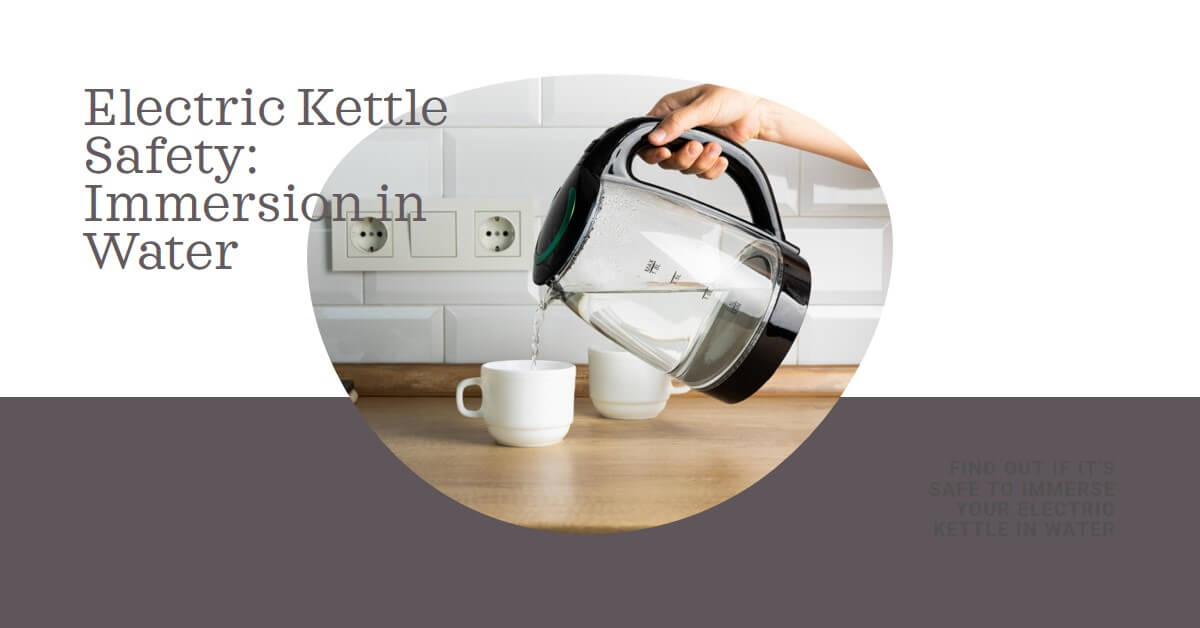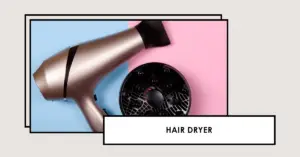Image: “Article Feature Image” by Bing, Source: [Bing Graphic Art].
Electric kettles have become a popular and convenient appliance for boiling water in households across the United States.
They offer quick and efficient heating, making them ideal for brewing tea, making coffee, or preparing instant meals.
However, there is a common question that arises: can you submerge a kettle in water? Submerging an electric kettle in water is not recommended due to the associated risks and potential hazards.
In this article, we will explore this topic and provide insights into the potential risks and considerations associated with submerging an electric kettle in water.
Understanding Electric Kettles

Electric kettles operate on a simple principle of converting electrical energy into heat energy, rapidly heating the water within the kettle.
They consist of various components, including a heating element, thermostat, water level indicator, and handle.
Safety features such as automatic shut-off mechanisms and boil-dry protection are also incorporated to prevent accidents and damage.
Submerging Electric Kettles in Water
Submerging an electric kettle in water is generally not recommended. Electric kettles are designed to heat water from the inside, and their electrical components are not intended to come into direct contact with water.
Placing the kettle in water can lead to severe consequences, compromising both safety and functionality.
The Dangers of Submerging Electric Kettles
Submerging an electric kettle in water poses several dangers. Firstly, it creates a significant electrical hazard.
Water is a conductor of electricity, and when it comes into contact with the kettle’s electrical components, there is a high risk of electric shock. This can result in severe injuries or even be fatal.
Additionally, submerging the kettle can cause damage to its internal parts. Water can seep into the heating element, thermostat, or other electrical components, leading to malfunction or complete failure. Repairing or replacing these components can be costly and time-consuming.
Disclaimer: This contains affiliate links to Amazon products. I may earn a commission for purchases made through these links.
Maintaining and Cleaning Electric Kettles
While submerging the entire kettle in water is not recommended, regular cleaning and maintenance are essential for its proper functioning and longevity. To clean the kettle, follow these steps:
- Unplug the kettle and let it cool down.
- Remove the kettle’s limescale or mineral deposits by descaling them. You can use vinegar and water solution, lemon juice and water solution, or commercial descaling products.
- Wipe the exterior with a damp cloth and mild detergent.
- Rinse the kettle thoroughly to remove any cleaning residue.
By following these cleaning methods, you can ensure a clean and hygienic electric kettle without the need for submerging it in water.
Read also my article: Wet Electric Kettles: Unveiling the Shocking Hazards.
Alternative Solutions for Cleaning Kettles
If you encounter stubborn limescale deposits or mineral buildup in your electric kettle, there are alternative solutions you can try.
One option is to use a mixture of equal parts vinegar and water, which can effectively dissolve mineral deposits.
Another option is to use a solution of lemon juice and water, as the citric acid helps break down limescale.
Commercial descaling products specifically designed for electric kettles are also available and can be used according to the manufacturer’s instructions.
Troubleshooting Electric Kettles
In case you encounter any issues with your electric kettle, it is essential to troubleshoot the problem before considering submerging it in water.
Common problems such as failure to heat, erratic temperature control, or strange odors can often be resolved by checking the power supply, cleaning the kettle, or seeking professional assistance.
Conclusion
While electric kettles are convenient appliances for heating water, submerging them in water is not advisable.
The risks of electrical hazards, potential damage, and personal injury outweigh any perceived benefits. Instead, regular cleaning and maintenance using appropriate cleaning solutions and techniques will ensure the longevity and optimal performance of your electric kettle.
Prioritizing safety and adhering to recommended usage guidelines will contribute to a safe and enjoyable experience with your electric kettle.
Want to learn more about electricity? Check my YouTube channel!
Are You An Electrical Engineer or Electrician?
Install my Free On Google Play Now! It’s 100% Free
The staff I recommend (Amazon Affiliate Links to products I believe are high quality):
- Economy 120 Volt/60Hz AC Power Source – Step-Down Voltage & Frequency Converters 1800W
- UNI-T Digital Multimeter Tester UT139C
- 50-Amp Extension Cord for RV “100ft”
- Voltage Stabilizer 110/220v
- Hair Dryer “best selling“
- TOSHIBA EM131A5C-BS Countertop Microwave Ovens
Disclaimer: This contains affiliate links to Amazon products. I may earn a commission for purchases made through these links.

